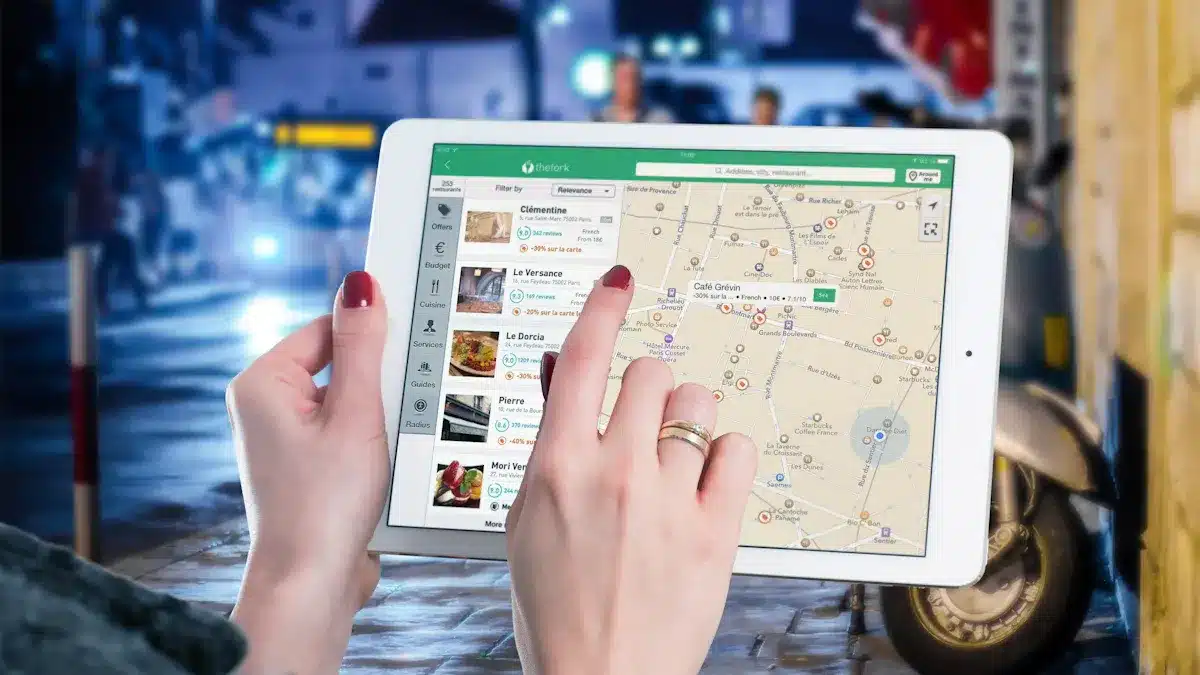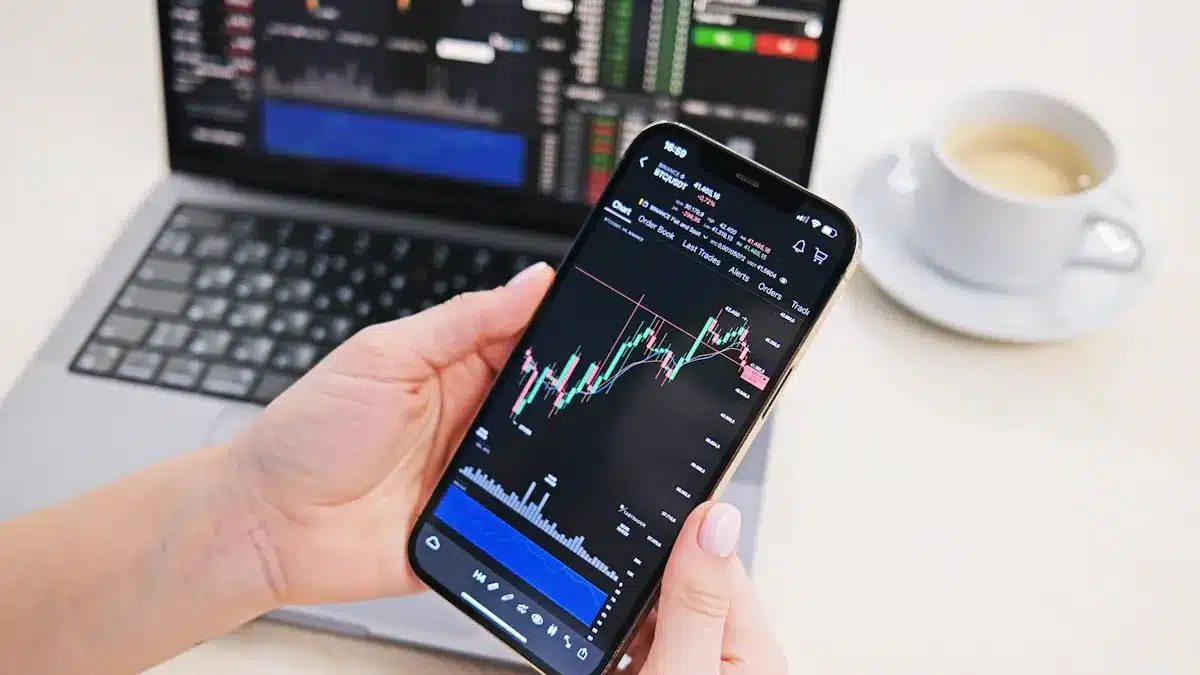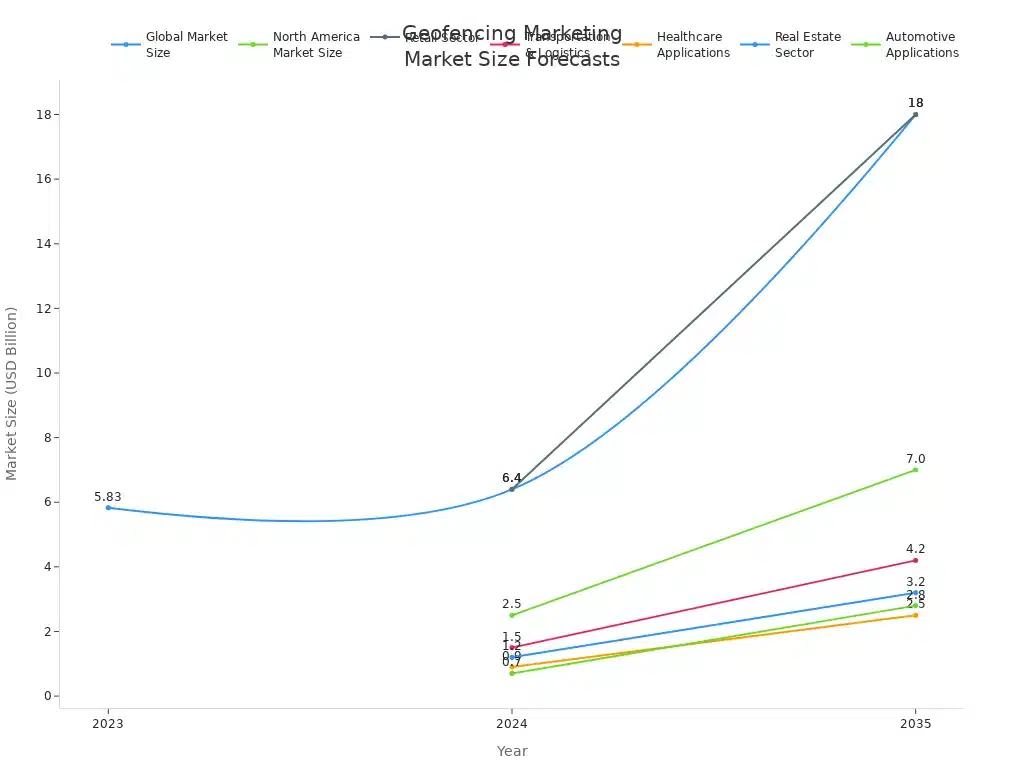
You use geofencing marketing to reach people where they are, and .Geofencing for targeted campaigns is a powerful way to connect with your audience. Geofencing uses GPS, Wi-Fi, and RFID to create invisible boundaries around locations like stores or events. When people enter these areas, you can send them special ads or deals directly to their phones. Almost 90% of marketers use location data, and over 60% use geofencing for targeted campaigns to deliver more personalized experiences. Geofencing marketing achieves click-through rates of about 7.5%, which is twice as high as standard mobile ads.

Using .Geofencing for targeted campaigns helps you reach the right people and makes your location-based marketing even more effective.
Key Takeaways
Geofencing makes invisible lines around places. It sends ads or offers to people who are close by.
Geofencing uses GPS and Wi-Fi to find small areas. These can be stores or events. This helps make marketing feel more personal.
To set up geofences, pick the right technology. Choose how big the area should be. Get user permission to keep privacy safe.
You can target people by putting geofences where they go. This can include places your competitors have. This can help you get more sales.
Use real-time data to track your campaigns. Test different messages. Change the geofence size to make things better.
Geofencing Marketing

What Is Geofencing?
Geofencing lets you set up invisible lines around real places. When people walk into or out of these spots, you can send them ads or alerts. Marketers draw digital shapes around stores, events, or even other businesses. If someone’s phone enters a geofenced area, they get a special offer or message right away. This uses GPS, Wi-Fi, and other mobile tools to spot movement and send ads fast.
Geofencing marketing is special because it targets small areas. You can send a push alert to anyone near your store. You can also reach people who visit a competitor’s shop. This helps you talk to the right people and get better results.
Tip: Geofencing works best when you pick your areas carefully and match your message to the place.
The main goals of geofencing marketing are:
Targeting very small areas for personal ads in real time
Getting more people to visit stores with location deals
Helping you gain and keep customers with special messages
Winning customers from rivals by showing ads near their stores
Making campaigns better by setting up geofences the right way
Using people’s comfort with sharing location for personal ads
Core Technologies
Geofencing marketing uses a few main technologies. GPS is the most popular because most phones have it and it works well outside. Wi-Fi is good for indoor geofencing and uses wireless networks to find where people are. RFID is used more for tracking products and stock, but not as much for ads since it does not work well with phones.
Bluetooth helps track people inside buildings, especially with beacons. Cellular data covers big areas but is not as exact. Software tools in apps help find locations and manage permissions. Ad servers store ads and follow rules for showing them. Demand-Side Platforms (DSPs) help you run campaigns and buy ad space quickly. Push notification tools send alerts at the right time, and Data Management Platforms (DMPs) collect data to help target people. AI tools and CRM systems help you make messages personal and automate your marketing.
All these tools work together to make geofencing marketing better. You can target people closely, talk to them right away, and check your results using location data.
Geofencing for Targeted Campaigns
How It Works
Geofencing for targeted campaigns helps you reach people by where they go. You make a virtual line around a real place, like a store or event. When someone walks in or out, their phone sets off a marketing action. You can send a push notification, show an ad, or give a discount right away.
Geofencing marketing uses GPS, Wi-Fi, and sometimes RFID to watch movement. You can set up geofencing with different triggers. For example, you might send a message when someone enters a geofenced spot. You can also send one if they stay for a while. Geofencing can track visits to your store after someone sees your ad online. This helps you see how well your campaigns work.
Note: Geofencing for targeted campaigns lets you reach people at the best time and place. You can get more people interested and bring more visits to your business.
Here is a simple step-by-step process to use geofencing for targeted campaigns:
Try different messages and offers to find what works best.
Track important numbers like click-through rates and conversions.
Keep making your campaign better by checking real-time results.
Setting Up Geofences
To set up geofencing for marketing, follow a few main steps. First, pick the right technology. Most marketers use GPS or Wi-Fi because they work well with phones. Next, choose the area for your geofence. You can pick a small circle, like one mile, or a bigger area, depending on your goals.
Always ask users for clear permission to use their location data. This keeps your marketing fair and follows privacy rules. Pick a platform to help you make and manage geofences, like Google Ads or a social media tool. Set up triggers for your campaign, like sending a message when someone enters or leaves the geofenced area.
Here is a checklist to help you set up geofencing for targeted campaigns:
Step | Action |
|---|---|
1 | Pick GPS, Wi-Fi, or other location tech |
2 | Choose the geofence area and size |
3 | Get user permission for location tracking |
4 | Choose a platform for geofence management |
5 | Set triggers for entry, exit, or staying in the area |
6 | Test the geofence before you start |
7 | Watch privacy and give opt-out choices |
8 | Start and track your campaign results |
You can change the size and shape of your geofence to fit your goals. A small circle works for one store. A bigger area is good for city-wide campaigns. Always test your setup and use data to make changes if needed.
Audience Targeting
Geofencing for targeted campaigns helps you reach the right people with the right message. Start by seeing where your target audience spends time. You can make geofences around places they visit, like gyms, malls, or even your competitors’ stores. This helps you focus your marketing on people who might buy from you.
You can also use location targeting with behavior data. For example, if you want to reach sports fans, set up geofencing around stadiums or sports stores. You can target people who visited a geofenced place in the last 30 days. This lets you send follow-up offers and see how many people visit your store after seeing your ad.
Some marketers use addressable geofencing to target certain homes or businesses. You can reach up to a million addresses with high accuracy. Conversion zones help you track how many people come to your store after seeing your ad, so you know if your campaign works.
Here are some tips for good audience targeting with geofencing marketing:
Start with a balanced geofence size. Change it based on your campaign data.
Add location targeting with interests or behaviors for better results.
Use strong calls-to-action like “Claim Your Discount Now!” to get quick responses.
Try competitor geofencing to win customers from other brands.
Use different ad types, like video or native ads, to reach your audience on many platforms.
Tip: Always respect user privacy. Be clear about how you use location data and give easy opt-out choices.
Geofencing marketing helps you reach your target audience at the best moment. You can get more people interested, bring more visits, and measure your success with real data.
Geofencing Marketing Campaigns
Ad Delivery
Geofencing lets you send ads at just the right time. When someone walks into a geofenced spot, their phone can get a message or offer. There are many kinds of geofencing display ads. Each type has its own job. The table below shows some common ad types you might use:
Ad Format | Description / Example Use Case |
|---|---|
Push Notifications | Quick messages, like coffee shop deals for certain times |
SMS Messages | Texts for flash sales or urgent deals |
In-App Ads | Ads inside apps when people enter geofenced places |
Social Media Content | Posts or ads for people in certain areas |
Flash Coupons | Short-time discounts, like 20% off for 30 minutes |
Inventory Alerts | Updates about new or restocked products |
Loyalty Triggers | Special deals for loyal shoppers near a store |
Weather-Based Promotions | Ads for weather, like raincoat deals when it storms |
Menu Promotions | Restaurant deals that change by time |
Wait Time Updates | Alerts about how long the wait is now |
You can use different ad types together to keep your campaign fun and new. Geofencing display ads help you reach people when they are ready to act.
Campaign Management
Managing geofencing campaigns means you must pay attention and be ready to change things. First, link your geofences to the right people and ads. You can use CRM and analytics tools to see how your campaign is doing. Many marketers use dashboards to watch numbers like click rates and store visits.
Tip: Use live data to make your campaign better. Change your geofence size or update ads if you see good results.
Here are steps to help you manage your campaigns:
Check your campaign with analytics dashboards.
Use live data to change geofence size, targeting, or ads.
Keep your geofence small, like 500 meters, for better results.
Make offers personal based on time, weather, or events.
Try different ads to see which one works best.
Connect geofencing data with your CRM to match visits to online profiles.
Use geofencing with email, SMS, or retargeting for more power.
This way, you get the most from your geofencing ads and keep your marketing strong.
Platforms and Tools
There are many tools for running geofencing campaigns. Some, like Thinknear, let you set up virtual lines, pick your audience, and show ads again to users. Taboola helps you use geo-targeting for ads on big websites. The table below shows two popular choices:
Platform | Key Features | Pricing Model |
|---|---|---|
Thinknear | Virtual borders, audience picking, retargeting, lots of location data | Custom price, demo |
Taboola | Geo-targeting for native ads, pay-per-click | Pay-per-click |
Many geofencing tools have smart targeting, self-serve options, and AI to spot local trends. You can use geotracking and push alerts to get people interested. Some tools work best for certain businesses, like car sales or stores. For example, American Eagle used geofencing ads and saw 65% more people buy.
When picking a platform, look for things like audience picking, live data, and saving money. The right tool helps your geofencing ads work better and reach your goals.
Benefits of Geofencing
Precision Targeting
Geofencing lets you reach people based on where they go. You do not just target where they live. You can make invisible lines around stores or events. You can even set them at your competitors’ places. When someone walks into these spots, you can send them a message right away. This helps you talk to people who might become your customers.
Here is how geofencing makes targeting better:
You draw invisible lines around certain places.
You send ads or alerts when people enter or leave.
You reach people who visit special locations.
You learn about people who go to your competitors.
You talk to people right away with messages that fit them.
This helps you use your money smart and get more sales.
Engagement and ROAS
Geofencing can help you get more people to interact with your ads. Some businesses see three times more clicks than normal. Many get click rates as high as 0.9%. Some even get a return on ad spend of 10 or more. For example, Whole Foods had a 4.69% conversion rate after people clicked. This is much higher than most stores. Burger King got over a million app downloads from their campaign. These numbers show geofencing can help you get more sales and better results for your money.
Tip: Sending offers to people nearby can make them act fast.
You can also learn a lot about what your customers do. This helps you make your next campaigns even better.
Qualified Leads
Geofencing helps you find the best people to sell to. You can send messages to people who already visited certain places. This makes it more likely they will buy from you.
You can pick people who are close to your business.
You can learn when people visit most and send offers then.
You can use small geofences and clear messages for quick replies.
You can even try to win customers from your rivals.
Personalizing your messages is important. If you send the right message at the right time, you get better leads and more sales.
Strategies and Measurement

Best Practices
You can make your geofencing marketing better by using smart steps. First, set clear goals for your campaign. Give special offers to people who enter your geofence. Try sending alerts during events to get more attention. Put geofences near your rivals to attract their customers. Make your messages personal and use strong pictures and words. Always ask people if you can use their data and tell them why. Test different messages and change the size of your geofence to see what works. Use geofencing with email or social media to make your plan stronger. Stay updated on new ideas and tools to keep ahead.
Tip: Do not send too many ads. Use limits so people do not get annoyed.
Real-World Examples
Many companies have done well with geofencing marketing. Starbucks gives special deals to people close to their stores. This brings in more customers and sales. Burger King made a Whopper Detour campaign with geofences at other burger places. This helped them get over one million app downloads. Dunkin Donuts uses geo-conquesting to send coupons to people near other coffee shops. This makes more people use their coupons. These examples show how using place and time can help your business grow.
Performance Metrics
You should watch important numbers to see if your campaign works. Look at click-through rate to see who clicks your ads. Check conversions to know who buys or signs up. Watch how many people come to your store after seeing your ad. Check return on investment to see if your campaign makes money. Use app use, sales, and customer happiness to see how your plan is doing. Checking these numbers often helps you make your geofencing marketing better and reach your goals.
To start a good geofencing marketing campaign, you need to:
Make your messages and calls-to-action fit your audience.
Watch important numbers like click-through rates and conversions.
Change your plan using live data and what people say.
Geofencing helps you reach customers when and where it matters. You get more people interested and stay ahead of others. Try new ideas, make your campaigns better, and always follow privacy rules to earn trust.

FAQ
What is the main benefit of geofencing marketing?
You can reach people when they are near your business. This helps you send offers at the best time. You get more visits and sales.
How do you set up a geofence for your store?
Pick a location and choose the size of your geofence. Use a marketing platform to draw the area on a map. Set your ad or message to send when someone enters.
Is geofencing safe for user privacy?
You must ask for permission before using location data. Always give people a way to opt out. Respect privacy rules to keep trust.
Can small businesses use geofencing?
Yes! Small businesses can use geofencing to target local customers. You can set up small areas and send special deals. Many tools work for any budget.
See Also
Using CarPlay To Stream And Browse Safely When Parked
Guide To Thermal Imaging Cameras For Rescue Missions 2025
Authentic Reviews Of Wireless Apple CarPlay In Ford F-150
Key Developments Driving Android Auto Wireless Adapter Innovation
Reasons G37 Apple CarPlay Adapters Revolutionize Your Driving
